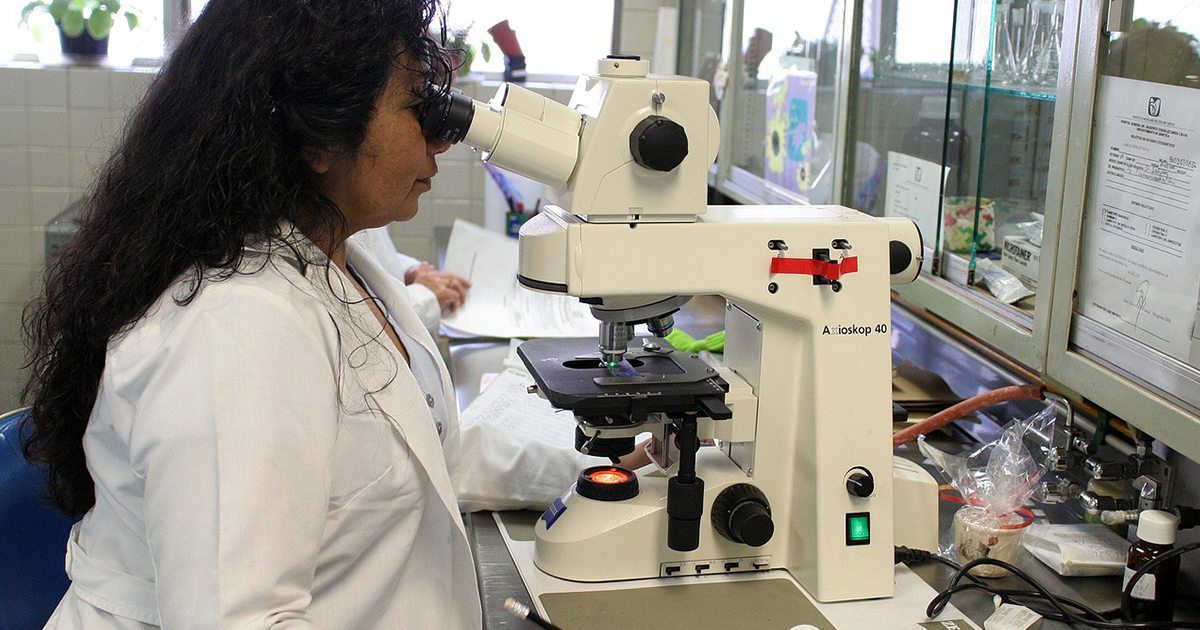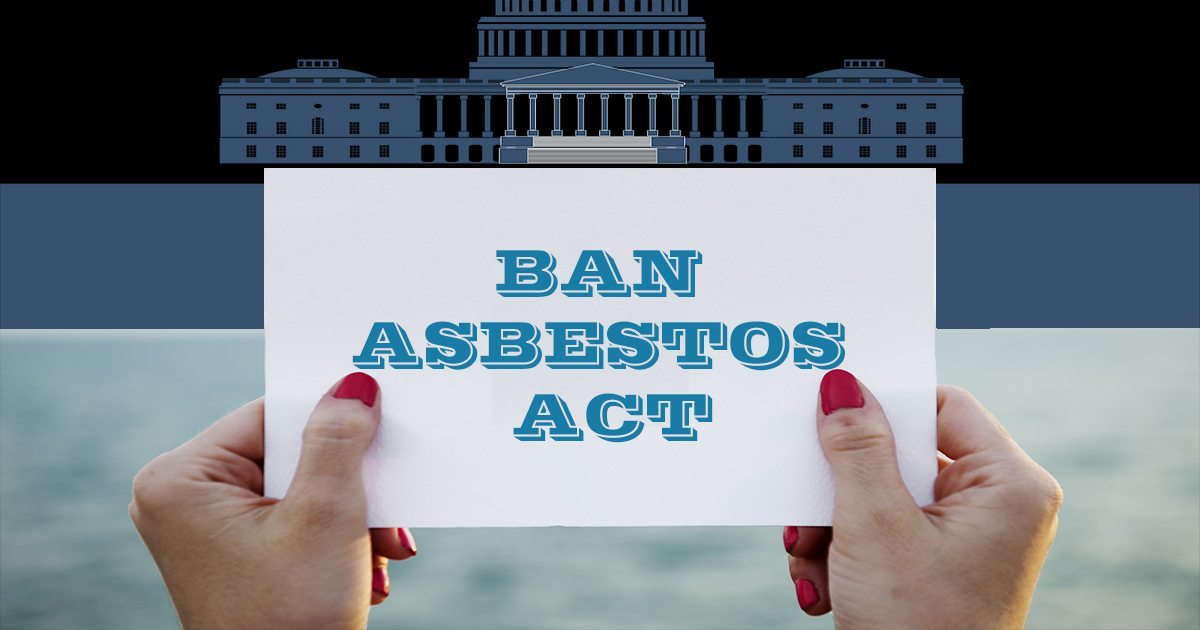Category: Featured News

“Laboratory in a Patient” Could Allow Simultaneous Testing of Multiple Mesothelioma Drugs
Personalized cancer therapy allows doctors to target treatment to a patient’s unique mesothelioma characteristics. Oncologists can personalize and adjust care based on the efficacy of a treatment for the patient. However, determining the right treatment or how well a drug is working can take time, leaving the patient with precious little time if the drug is not effective at fighting off the deadly cancer.
Now, researchers at MIT, Beth Israel Medical Center and Fred Hutchinson Cancer Research Center and Presage Biosciences in Seattle have found a way to determine whether a patient’s tumor will be sensitive to a sampling of cancer drugs through an “implantable device” that can return nearly immediate results. The “laboratory in a patient” can contain samples of multiple drugs and simultaneously expose the tumors to all the drugs at once to assess the impact on the cancer, allowing the doctor to find the optimal drug for the patient.
In an April 22 article in MedlinePlus, researchers report two separate tools have been developed that can quickly detect whether a patient will respond to a treatment. With this approach, no biopsies are needed, several drugs are tested at once, and the patient is not exposed to side effects.
“Different patients can respond completely differently to the same drug,” said the lead author of one of the studies, Oliver Jonas, a post-doctoral associate in the Robert Langer Lab at the Massachusetts Institute of Technology’s Institute for Integrative Cancer Research. “So you have to test therapies sequentially. And it can take several weeks to many months to see the effect of a single therapy,” Jonas said.
“So the motivation of this whole study was to find ways to identify the optimal therapy in a patient before a treatment decision is actually made,” Jonas said.
Mesothelioma, often called asbestos cancer as the signature cancer of the mineral, is highly aggressive, with no known cure. Most often, the cancer resists the selected treatment, leaving the oncologist scrambling to find another option that may prove effective. Unfortunately, this gives the mesothelioma time to grow and divide, impacting the patient’s survival.
One device, that can hold 16 different cancer drugs, according to MedlinePlus, was tested on mice using melanoma, prostate and breast cancer tumors. The results showed “a reliable and accurate way to predict each drug’s effectiveness.” However, Jonas warned that the test comprised a mere millionth of a full dose, although he added, that the amount “correlated strongly” with the impact of a full dose used in treatment.
Personalized care targeted to a patient’s unique mesothelioma characteristics optimizes the potential for success of the treatment and offers treatment options that may not otherwise have been considered. The use of this device could allow oncologists to personalize treatment to each patient’s reaction to the therapies.
The second device, from the Seattle team, is a handheld microinjection device designed to test up to eight drug samples in tumors located near the surface of the skin, such as skin cancer, breast cancer, and lymphoma. Initial tests have been conducted in four humans with no serious side effects.
The researchers concluded, “Because these effects are crucial to predicting drug response, we envision that these devices will help identify optimal drug therapy before systemic treatment is initiated and could improve drug response prediction beyond the biomarkers and in vitro and ex vivo studies used today.”
Dr. Peter Kozuch, associate professor of medicine, hematology and medical oncology at Beth Israel Medical Center in New York City, adds that more research must be done, and they must see the same benefits and results in people as they have seen in the lab.
“The field of oncology is increasingly trying to become more precise,” said Dr. Kozuch. “But this is brand new technology, ” he cautions, “And unfortunately there is simply no shortcut to clinical development.”
Findings from both studies were published online April 22 in Science Translational Medicine (http://stm.sciencemag.org/content/7/284/284ra57).
See Mouse Models That Mimic Human Tumor Growth Could Lead to New Approach to Personalized Mesothelioma Care for a study where researchers tested parallel tumor progression in patients suffering from the disease in an animal laboratory mice.
Know more about Mesothelioma and how you can deal with it.

EWG Analysis: Asbestos Kills 12,000-15,000 Americans per Year
A new analysis by the Environmental Working Group (EWG) finds that asbestos kills significantly more Americans each year than previously estimated—and the actual asbestos death toll may be much higher.
Using data from the Centers for Disease Control and Prevention (CDC) database, EWG calculated that from 1993 to 2013, 189,000 to 221,000 people (12,000 to 15,000 per year) died from mesothelioma, lung cancer, and asbestosis in the United States.
EWG says that public records of U.S. asbestos-related deaths are imprecise, however, and that their estimate is conservative.
“As shocking as these figures are, they may be too low,” said epidemiologist and former assistant Surgeon General Dr. Richard Lemen in a press release from EWG Action Fund.
http://www.prweb.com/recentnews
“The report did not estimate deaths from the other-asbestos-related diseases. Furthermore, some studies suggest even higher lung cancer rates in asbestos-exposed workers,” said Lemen.
According to EWG, 39,870 American died from mesothelioma, an incurable cancer caused exclusively by asbestos exposure, from 1999 to 2013. Over the same period, EWG estimates that 20,317 Americans died from asbestosis, a type of lung scarring caused by asbestos fibers, while as many as 159,480 died from asbestos-related lung cancer.
In addition to deaths from these causes, it is believed that asbestos exposure can also cause cancers of the larynx, pharynx, stomach, colon, ovaries, and rectum. An older study by EWG that includes asbestos-related gastrointestinal cancer puts the number of annual U.S. asbestos deaths at around 10,000.
U.S. asbestos use peaked in the 1970s and the carcinogenic mineral fiber is no longer mined in this country, but it continues to be imported and used in a wide range of products. An EWG analysis of U.S. port records indicates that at least 8 million pounds of raw asbestos have arrived here since 2006.
EWG’s figures indicate that there was no apparent decline in asbestos deaths from 1999 to 2013. There were 2,481 mesothelioma deaths in 1999 compared to 2,686 in 2013 and a high of 2,874 in 2012. Asbestosis deaths were virtually identical in 1999 and 2013 (1,258 vs. 1,229). Both EWG’s lower and higher estimate of lung cancer deaths show increases from 1999 to 2013.
This can be attributed to the long latency period of many asbestos diseases. Mesothelioma, for example, can take 15-50 years or more to develop from the time of initial asbestos exposure.
Given the lag between asbestos exposure and disease onset, asbestos disease rates will likely remain high for years to come. One expert estimates that within the next three decades 300,000 Americans will die from asbestos.
“The only way to see the numbers of asbestos-related fatalities significantly decline among Americans is for our elected leaders to adopt an outright ban on the deadly substance,” said Sonya Lunder, author of the EWG report, “Asbestos kills 12,000-15,000 people per year in the U.S.”

Italian Study: Mesothelioma Cases Concentrated Near Asbestos-Using Industries
Italian researchers looked at the geographic distribution of malignant mesothelioma cases and found that they tend to be clustered around cement manufacturing, shipbuilding, and other industrial facilities.
A team lead by Marisa Corfiata analyzed 15,322 incident cases of malignant mesothelioma from the period 1993 to 2008 recorded by the Italian national mesothelioma registry. Subjects were interviewed and asbestos exposure—the only known cause of mesothelioma—was defined for 11,852 of 15,322 cases. Cases were then then mapped and geographic clusters identified for the Northwest, Northeast, Centre, and South & Islands regions of Italy. Finally, case clusters were identified according to one of three asbestos exposure modalities: environmental, familial, and occupational.
According to the researchers, the main sources of mesotheliomas are cement manufacturing plants and shipyards, while several case clusters were also found in the vicinity of asbestos textile facilities.
“The largest [malignant mesothelioma] clusters, per number of cases or municipalities included were found, indeed, where the biggest asbestos cement plants or shipyard facilities were located,” writes Corfiata. “Overall, it should be noted that an asbestos cement industry, an asbestos textile industry or a harbor industrial area inclusive of shipyards partially contribute to exposure of MM cases in about 75% of the clusters identified.”
Diving deeper into the numbers, the researchers note that the high number of mesothelioma cases among women in the largest asbestos-cement industry clusters may be attributable to familial exposure, or so-called “take home” exposure, which occurs when one family member brings home asbestos fibers on their body or clothing and exposes other family members. For the shipyard clusters, mesothelioma is mainly associated with naval construction and/or repair activities.
The researchers also note a number of other industrial asbestos exposure sources, including steel manufacturing plants, metal product manufacturing, oil refineries, chemical facilities, power plants, railway carriage construction and maintenance, the automotive industry, glass industry, and food processing. These are many of the same industries that have historically in the United States produced occupational asbestos exposure.
But unlike the United States, Italy has enacted a national asbestos ban. The study points out that Italian asbestos consumption peaked later in Italy than in the U.S., and, given the 35-40 year latency period of mesothelioma, “a high number of cases is still expected in Italy in the next few decades.”
Mesothelioma incidence is thought to have already peaked in the United States, but as long as the use of asbestos products remains legal in this country, the carcinogenic mineral fiber continues to pose a threat to public health. Each year in the U.S. approximately 3,000 people are diagnosed with mesothelioma, while 10,000 total death are attributed to asbestos.
You can read the full text of the Italian report “Epidemiological patterns of asbestos exposure and spatial clusters of incident cases of malignant mesothelioma from the Italian national registry” at BMC Cancer.

Senators Introduce Legislation That Calls For U.S. Asbestos Ban
Senators Barbara Boxer (D-CA) and Edward Markey (D-MA) have introduced a bill that would strengthen the country’s chemical protection laws and specifically ban asbestos use.
The Boxer-Markey bill, called the Alan Reinstein and Trevor Schaefer Toxic Chemicals Protection Act, aims to reform the 1976 Toxic Substance Control Act (TSCA). According to a U.S. Senate press release, the bill’s key provisions include a requirement that the Environmental Protection Agency (EPA) act quickly to consider a ban on asbestos. Asbestos remains legal in the United States despite being a significant cause of occupational death. The bill also maintains states’ rights to protect people from dangerous toxic chemicals.
A report from The Hill says that the Boxer-Markey bill is an alternative to the bipartisan chemical reform bill introduced earlier in the week by Sens. Tom Udall (D-NM) and David Vitter (R-LA). That bill does not address the issues of states’ rights or an asbestos ban. Environmentalists, consumer advocates and Sens. Boxer and Markey claim that the Udall-Vitter bill was influenced by the chemical industry.
The namesakes of the Boxer-Markey legislation, Alan Reinstein and Trevor Schaefer, are both cancer victims. Alan Reinstein died from the asbestos-related cancer mesothelioma in 2006. He was the husband of Linda Reinstein, co-founder of the Asbestos Disease Awareness Organization (ADAO). Ms. Reinstein criticized the Vitter-Udall bill in an ADAO press release for not addressing asbestos, a human carcinogen that, according to the ADAO, claims 10,000 American lives and 107,000 lives worldwide each year.

Ms. Reinstein said she applauds Sens. Boxer and Markey for their leadership in taking steps to eliminate exposure to asbestos, the cause of the most occupational deaths in history.
Despite Dangers, Asbestos Remains Legal in U.S.
It has been known for decades that asbestos poses a danger to human health. A 1989 EPA-issued final rule to the Toxic Substances Control Act banned most asbestos-containing products, but this rule was overturned in 1991 by an appeals court.
The asbestos industry lobbied aggressively to overturn the ban and today it is still legal to manufacture, import, process and distribute a wide range of asbestos products, including cement, clothing, flooring and roofing products, vinyl floor tile and automotive components.
Not all asbestos products are legal, however. Regulations passed in the 1970s outlawed products such as insulation, patching compounds and artificial fireplace embers.
Asbestos has not been mined in the United States since 2002, but the mineral fiber is still imported on a large scale. United States Geological Society documents show that in 2013, the U.S. imported 870 metric tons of asbestos.
The chloralkali industry—an element of the chemical industry—accounts for two-thirds of U.S. asbestos consumption.
Know more about Mesothelioma and how you can deal with it.
Sources
- U.S. Senate press release
http://www.epw.senate.gov/public/index.cfm?FuseAction=PressRoom.PressReleases&ContentRecord_id=9351d8b8-fcb8-e5c8-70b0-dd77260efd45 - United States Geological Society documents
http://minerals.usgs.gov/minerals/pubs/commodity/asbestos/mcs-2014-asbes.pdf - ADAO press release
http://www.asbestosdiseaseawareness.org/archives/31896 - The Hill
http://thehill.com/policy/energy-environment/235504-boxer-introduces-her-own-chemical-reform-legislation

UK Mesothelioma Community Reeling After Veto of Saatchi Bill
Less than a year ago, mesothelioma patients and other rare disease sufferers in the UK had their hopes pinned on the passage of the Medical Innovation Bill. At that time it seemed just a technicality that the bill would be signed into law, and now doctors would be innovating and trying new drugs on seriously ill patients. Instead, last month the supporters of the bill were dealt a devastating blow when the Liberal Democrats’ health minister, Norman Lamb, told Tory health secretary, Jeremy Hunt, that even though the bill passed the House of Lords, his party would not support it, according to a Feb. 28 article in the Telegraph. In fact, he said, the party would not even allow the House of Commons to debate it. “They have killed the Medical Innovation Bill,” said Lord Saatchi, who introduced the bill after the death of his wife from cancer, upon hearing of the defeat. “It is dead. By killing the Bill they have killed the hopes of thousands of cancer patients.”
Mavis Nye Makes an Appeal for Mesothelioma Patients
Mavis Nye, who has battled mesothelioma for over five years and championed the cause by working directly with Lord Saatchi, attending public consultation sessions, making herself available to the media for interviews, and posting vital information on social media, particularly felt the sting of defeat. “Nick Clegg [Liberal Democrat leader] has signed a death warrant to so many Mesowarriors suffering from Mesothelioma,” Mavis said to MesotheliomaHelp.”We are terminal and we need to be able to have every new drug that is out there.” The Medical Innovation Bill, as explained on the Medical Innovation Bill website, will help doctors to innovate new treatments and cures safely and responsibly for cancer and other diseases. And this is exactly what sufferers of rare diseases, such as mesothelioma, need in order to find an effective treatment. The disease, that is caused by past asbestos exposure, is primarily treated with chemotherapy and radiation, but typically recurs. Through innovation, doctors in the UK would have access to treatments proven beneficial on other diseases and cancers. However, without the bill, doctors fear lawsuits if a treatment, not approved for mesothelioma, were to fail. Mavis supported the mesothelioma community through her help with Lord Saatchi and a team of advocates who offered public consultations about the bill and gathered feedback from the public, patients and the medical community in order to address any concerns. Modifications were made, and the bill was “debated four times in the House of Lords, amended, improved and passed to the House of Commons unanimously with cross-party support from the Tory and Labour parties,” according to Alex Smith, CEO of Harrison’s Fund, a nonprofit organization dedicated to fighting Duchenne Muscular Dystrophy of which his son suffers. Yet, still, the bill failed due to concerns raised in the House of Commons. Mavis sent an email to Nick Clegg pleading for reconsideration of the bill, saying in part, “We Are Mesothelioma Sufferers, there is no cure, please help us and change your mind. ” “Please think again Mt Clegg.” Mavis received a response from Edward Simpson, Office of the Rt Hon Nick Clegg MP, with the following statement:
“As you are aware, the Bill seeks to encourage responsible innovation in medical practice by allowing doctors to use medicines which are outside of the usual range that are accepted for the treatment of a condition. We must avoid the risk of any unintended consequences, which is why these proposals need to be looked at seriously by Government and considered in depth.”
“One day he [Nick Clegg] will feel very guilty about this I imagine,” said Lord Saatchi. “To do what he has done, to kill all these people’s hopes, is something that will haunt him.”
Still Advocating and Fighting for Passage
“I have enormous sympathy for all those who have been through the awful experience of not being offered treatment which they believe might offer a chance of survival or of improving their condition,” Norman Lamb wrote in a Feb. 28 article in the Telegraph. “But getting the law right in this area is incredibly important. We have to avoid the risk of unintended consequences.” Lamb added that appointing someone to examine the barriers to innovation and solutions to overcoming them it could “then lead to draft legislation, if it is deemed necessary, going through full parliamentary scrutiny later this year.” With that being said, and with so much time and effort invested in the bill, Saatchi and his team are not giving up. They have continued to reach out to the members of parliament, hit social media hard and remain available to the media to help spread the word about the bill. “We want to generate a very quick petition to get the relevant politician, Nick Clegg, to undo his veto against the bill,” Dominic Nutt, director of communications at The Saatchi Cancer Initiative at M&C Saatchi, said to MesotheliomaHelp. The petition, set up on Change.Org by Alex Smith, requests the parliament to “Put lives before politics.” The goal is to get 5,000 signatures. Currently, there are over 3,800 supporters. For more information about the Saatchi Bill visit the Medical Innovation Bill website. Also, follow @SaatchiBill on Twitter or on Facebook for daily updates. Know more about Mesothelioma and how you can deal with it. Sources:
- Andy Burnham says LibDems’ decision to axe Saatchi Bill is ‘odd and wrong’
http://www.telegraph.co.uk/news/health/saatchi-bill/11444892/Andy-Burnham-says-LibDems-decision-to-axe-Saatchi-Bill-is-odd-and-wrong.html - Fury as Lib Dems kill off Saatchi Bill
http://www.telegraph.co.uk/news/health/saatchi-bill/11437789/Fury-as-Lib-Dems-kill-off-Saatchi-Bill.html - Lib Dems veto Saatchi’s medical innovation bill
http://www.theguardian.com/politics/2015/mar/01/lib-dems-veto-saatchis-medical-innovation-bill - Lord Saatchi’s drugs bill has been let down by politics
http://www.telegraph.co.uk/news/health/news/11443310/Lord-Saatchis-drugs-bill-has-been-let-down-by-politics.html - Norman Lamb: Why we had to axe Lord Saatchi’s Bill and think again
- Medical Innovation Bill
http://medicalinnovationbill.dh.gov.uk/ - Medical Innovation Bill.
http://medicalinnovationbill.dh.gov.uk/
Free Mesothelioma Patient & Treatment Guide
We’d like to offer you our in-depth guide, “A Patient’s Guide to Mesothelioma,” absolutely free of charge.
It contains a wealth of information and resources to help you better understand the condition, choose (and afford) appropriate treatment, and exercise your legal right to compensation.
Download Now